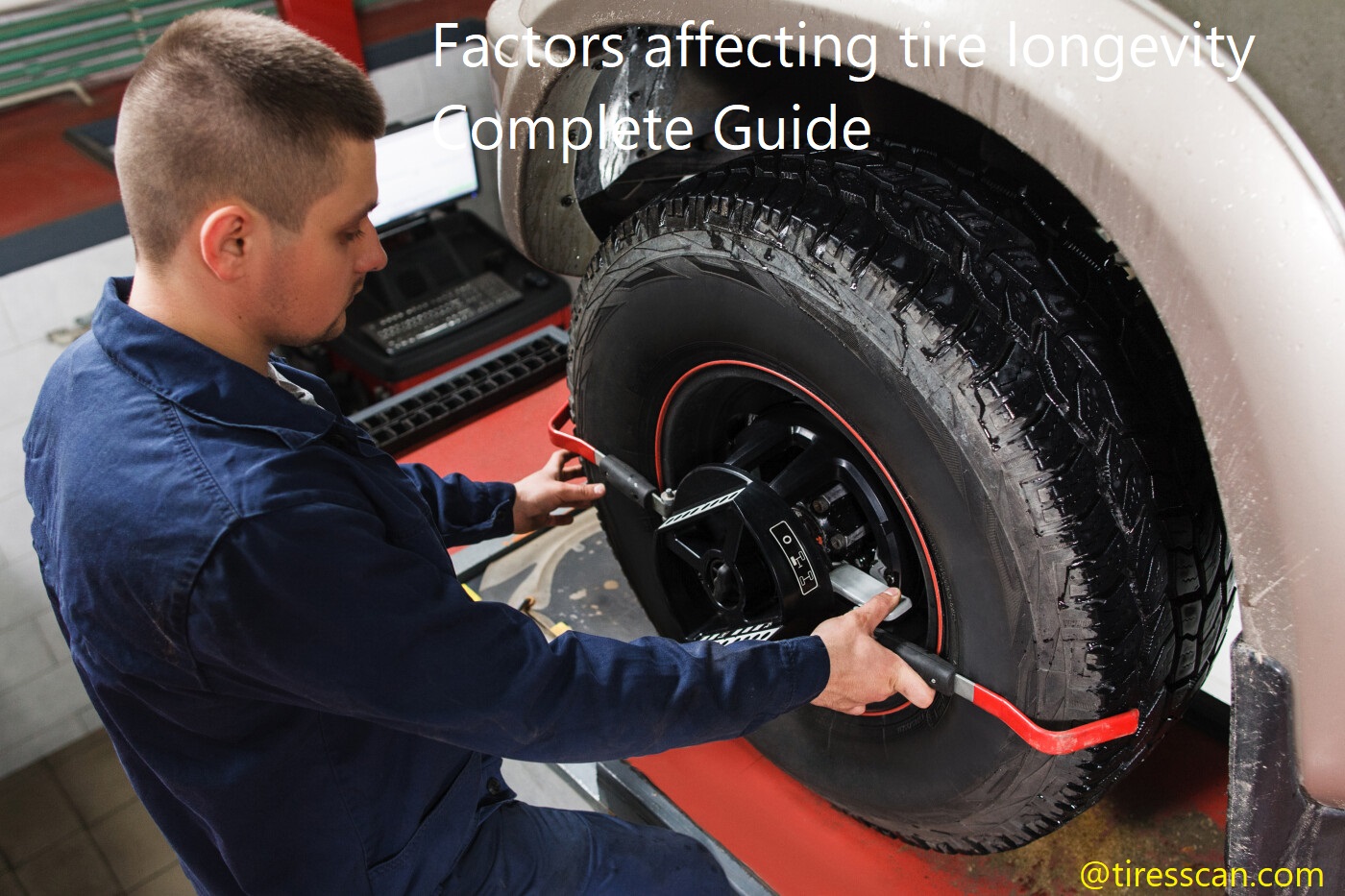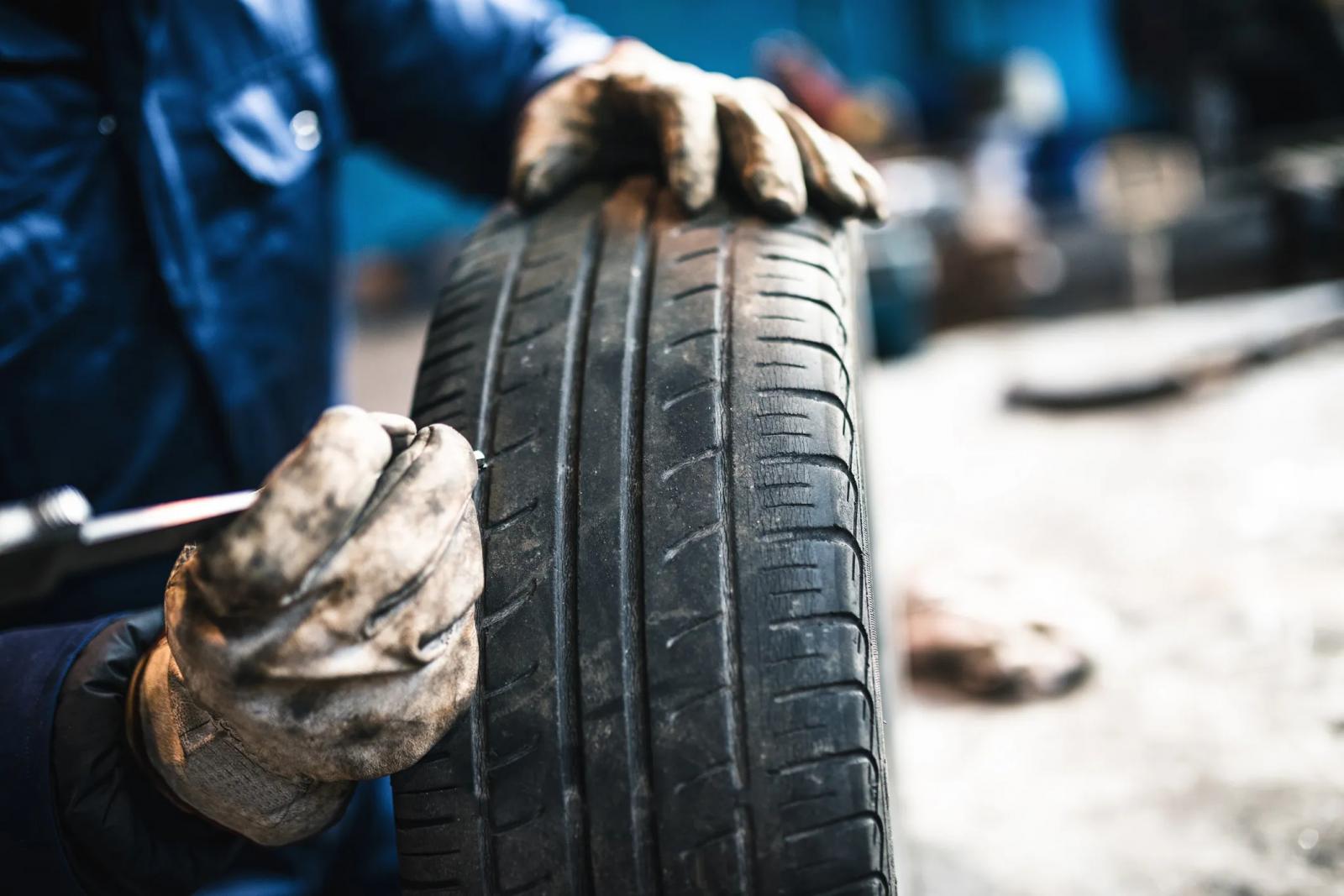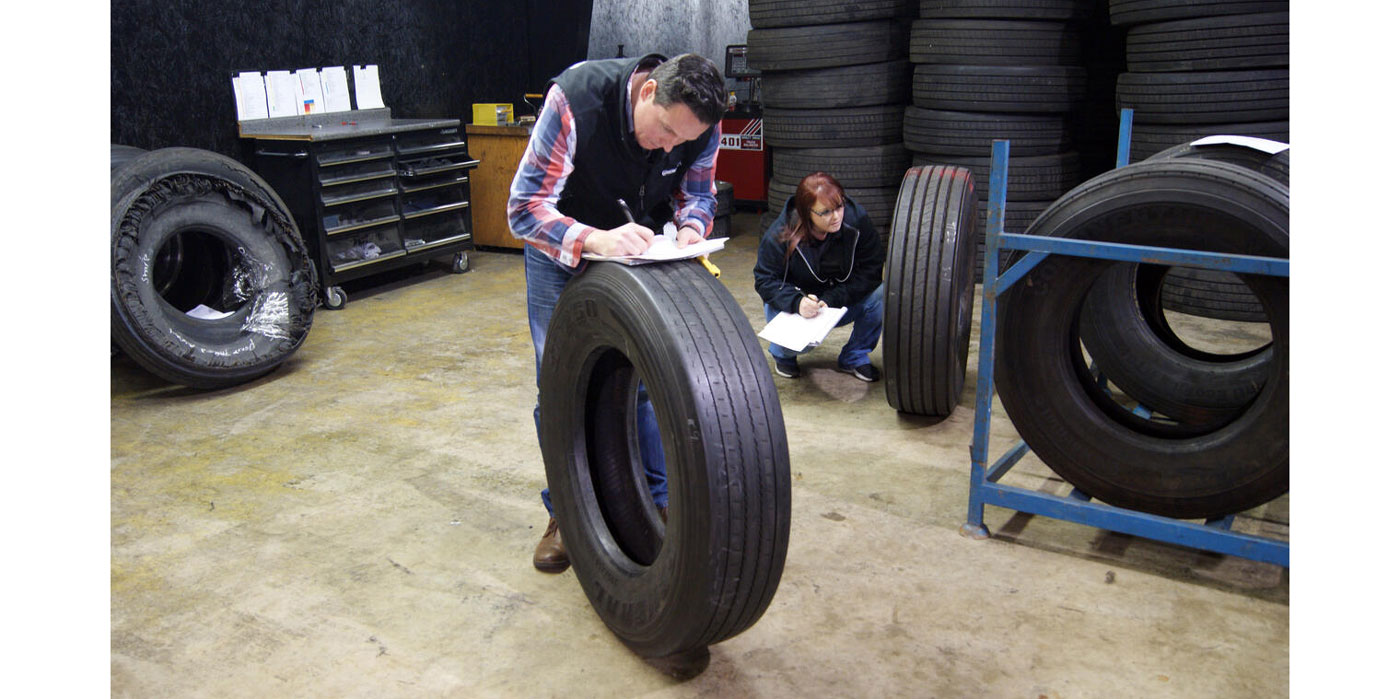Are you worried about the longevity of your tires? Fear not! This guide is here to help you answer all your questions and understand the factors impacting tire life.
You will be empowered to make informed decisions, extend the life of your tires, and ensure a safe ride.
This guide will provide a comprehensive overview of the factors that affect the life expectancy of a tire, from basic items such as proper car maintenance and road conditions to more advanced aspects such as driving style and tire pressure.
First we’ll explore the basics of how tires are designed and built, followed by an in-depth look at each individual factor and its effects on the longevity of the tire. Finally, we’ll provide some general tips to help keep your tires safe and performing well over their lifetime. Knowing what affects your tires’ lifespan can ensure that you get the most out of them, while keeping you safer on every drive.
Importance of tire longevity
Tire longevity is a critical factor for vehicle owners. Choosing tires with superior durability helps to ensure a safe and reliable ride. Tire longevity is affected by usage patterns, tire type, conditions of use, and tire maintenance.
Properly maintained tires are key to long life and maximum performance. Tire care includes wheel alignment, lubrication of the wheel bearings, tire balancing and rotation, checking air pressure regularly, using the correct load for your vehicle, storing tires correctly and avoiding overloading or impacting an inflated tire.
Tire design plays an important role in determining how long tires can last. Tires manufactured with high-grade rubber materials have longer wear life than those with cheaper materials that use additives to compensate for poor rubber grade quality. Tires with advanced tread designs usually give better performance and are better suited to all types of terrain while providing benefits like longer wear life over standard tread designs.
Environmental factors also affect the lifespan of a tire significantly. Extreme temperature changes can age the rubber prematurely, while frequent exposure to water or ultraviolet light can cause the internal structure of some tires to deteriorate rapidly over time leading to cracking and loss of air pressure at a faster rate than predicted by normal aging conditions for any given tire model. Regular inspections for signs of physical damage or abnormal wear indicate when it is time for replacement regardless of remaining tread depth due to these environmental effects on tires.

Tire Maintenance
Good tire maintenance is one of the single most important things you can do to ensure long life and safe operation of your tires. You should check your tires often, or at least once a month, for proper pressure. When checking tire pressure, it is important to bear in mind that different types of vehicles and various conditions may require different pressure levels. Be sure to consult your owner’s manual (or other appropriate documentation) for the recommended tire pressure settings for your vehicle.
You also need to inspect your tires for wear & tear, bulges or cuts, sidewall damage and uneven wear. In addition, make sure that your tires are properly balanced and aligned at properly scheduled intervals. Unbalanced wheels can cause uneven and accelerated tread wear as well as vibration in the steering wheel, seat or pedals while driving.
Beyond regular inspection, note that using improper wheel weights or unapproved wheel spacers can reduce the lifespan of a tire significantly due to increased centrifugal force on the semi-rigid belt package in the tires when accelerating or cornering hard. And finally, be sure not to overload any vehicle; exceeding its weight rating will create higher stress on all four corners of the car which can lead to shorter tire lifespans as well as other problems such as suspension failure and warping brakes.
Proper inflation
A tire’s life depends largely on how well it is inflated. Proper tire inflation pressure promotes even wear, maximizes fuel economy, and gives the best performance. Under inflated tires generate excessive heat that could reduce tread life.
To maintain optimum performance, the tire’s cold inflation pressure should be checked regularly with a properly calibrated gauge and adjusted to the vehicle manufacturer’s air pressure recommendations found on the sidewall or in your owner’s manual.
In most cases, over-inflation will not affect performance but can cause hard handling and uneven treadwear.
Regular rotation
Regular tire rotation is vital to extending your tire’s longevity, as it helps to ensure even tread wear across the surface of the tire and enables you to get the maximum number of miles out of your tires. The most common type of rotation is known as a “Fore-And-Aft” or Cross rotation. This involves rotating the tires from one position on the car to another (typically front-to-back and/or back-to-front). Rotations should generally be done every 6,000 to 8,000 miles or every other oil change (whichever comes first) for optimal performance and longer life.
When having your tires rotated, it’s important to note that it should always be done in an X pattern and never moved side by side because this can cause premature wear and noises due to the construction differences between tread patterns. Additionally, a wheel alignment should be performed after every two or three rotations in order to ensure optimum performance.
Wheel alignment
When buying new tires, it is important to ensure your wheels are properly aligned. Incorrect wheel alignment is one of the factors that can reduce the life of your tires significantly. Proper wheel alignment helps to keep the car running in a straight line and stops tires from wearing down prematurely.
The most common sign of misaligned wheels is uneven wear on the treads or if your vehicle feels like it’s pulling to one side when you’re driving. To ensure proper wheel alignment, check for signs of tire wear, such as bulging middle parts or bald patches on either sides, and act accordingly. Tires can usually be rotated every 6,000 miles (10,000 km) to extend their lifespan by even more. Always consult your vehicle manufacturer’s guidelines for the recommended distance between rotation intervals.
Additionally, regular balancing increases safety and extends tire life by ensuring weight is evenly distributed among all four tires of the vehicle. Wheel alignment typically costs less than hundred dollars and should be done at least once a year in order to maintain optimum performance and longevity of your tires over time.

Road Conditions
Road conditions can have a significant effect on the life of your tires because they influence the tires’ rate of wear, exposure to hazards and exposure to hot summer temperatures. In many cases, tire life can be double or even triple when driven on high-quality roads. Driving over many common road hazards such as potholes and uneven surfaces can cause tread separation, punctures or other damage which can reduce the life of your tires significantly. In some cases, even mild brushes against curbs, rocks or other objects may cause irreparable tread damage.
Hot road surface temperatures during the summer will also contribute to tire wear as heat affects rubber components differently than colder installations. Additionally, accumulated debris from driveways and muddy areas can cling onto your tires and grind down its treads which will reduce its effectiveness and reduce its overall life span. Therefore, it is always best practice to change these driving conditions whenever possible in order to get the maximum benefit out of your existing tires and insure that they stay safe throughout their lifetime.
Road surface type
- Road surface type: The type of roads on which your tires have to perform will have a major effect on their longevity. Coarse surfaces such as asphalt or chip seal can cause accelerated wear and tear on treads, while smooth surfaces like concrete can minimise stress on the tire walls. Driving in the rain, snow, and other adverse weather conditions may also contribute to the degradation of your tires. It’s important to be aware of the surface types you are driving over, and account for any excessive stress that is put on tires at different times.
- Tire Pressure: Maintaining adequate pressure in your tires is crucial for its optimal performance as well as for its longevity. If your tires are over-inflated or under-inflated it can contribute to increased wear and tear on the tire walls, resulting in less life expectancy. To ensure optimal tire performance and longevity, check your tire pressure at least once a month and make sure they are inflated within manufacturer specified ranges according to make and model of the vehicle you are driving.
Temperature and weather conditions
Temperature and weather conditions can have a major impact on tire longevity. Extreme temperatures cause the rubber compounds in a tire’s construction to rapidly expand and contract, leading to increased wear and tear. Excessive heat also causes the air pressure inside a tire to increase, which is why tires need to be checked at least monthly during hot periods.
Cold temperatures, on the other hand, stiffen the rubber compound in tires, reducing its flexibility. This decrease in flexibility makes it easier for road hazards such as rocks or potholes to puncture or slice the rubber of your tires and cause uneven tread wear or damage. Tire pressure should be checked regularly during cold weather since lower air pressures increase tire contact with the road surface and can cause more damage from these hazards.
It’s important to check your air pressure regularly when temperatures are changing significantly as this could have an effect on its safety and performance.
Driving habits
A driver’s driving habits greatly affect the life of a tire. Aggressive braking, accelerating and cornering can accelerate wear on your tires and shorten their lifespan. It can also cause uneven wear patterns which can make your tire unsafe to drive on by decreasing its stability.
To help increase the life of your tire, practice conscientious driving habits like easing into turns and accelerating slowly. Additionally, avoid overloading the vehicle as this will cause increased pressure on the tires and compromise their performance.

Conclusion
In conclusion, tire longevity is a complex issue and there are several key factors that affect how long your tires will last. Proper maintenance and care of your tires can help extend their life, and it is important to check the tread wear and inflation levels regularly. Regular inspection of tires for signs of wear or damage should also be done to protect against costly repairs.
In addition, tire alignment needs to be checked periodically, as improper alignment can cause a significant decrease in the lifespan of your tires. By following these tips, you can ensure that your tires give you many years of safe and reliable service.
FAQs
What shortens the life of tires?
Several factors can shorten the life of tires, including underinflation, overloading, speeding, potholes, hitting curbs, and lack of maintenance.
How can I improve my tire longevity?
To improve your tire longevity, you can ensure that your tires are inflated to the correct pressure, rotate them regularly, avoid overloading your vehicle, and maintain proper wheel alignment and balancing.
How many miles should a tire last?
The lifespan of a tire can vary depending on factors such as driving conditions, maintenance, and quality of the tire. Generally, a tire can last between 25,000 and 50,000 miles.
Do tires last longer if you drive slower?
Driving slower can help to extend the lifespan of your tires by reducing wear and tear, but it is not the only factor that affects tire longevity.
Why do my tires only last 2 years?
Tires may only last two years due to factors such as underinflation, overloading, speeding, poor road conditions, lack of maintenance, and poor driving habits.
How long should tires last years?
The lifespan of tires can vary, but they typically last between 3 and 6 years, depending on usage, maintenance, and storage conditions.
What are the best longest lasting tire?
Several tire brands offer long-lasting tires, including Michelin, Continental, and Bridgestone. However, the longevity of tires depends on various factors, so it is essential to choose a tire that suits your driving needs.
How long do OEM tires last?
OEM (Original Equipment Manufacturer) tires can last anywhere between 20,000 and 60,000 miles, depending on several factors such as driving conditions and maintenance.
What can ruin your tires?
Several factors can ruin your tires, including underinflation, overloading, speeding, hitting curbs, potholes, lack of maintenance, and exposure to extreme temperatures and sunlight.
Do higher speeds wear out tires faster?
Driving at higher speeds can cause increased friction and heat buildup, which can wear out tires faster. Additionally, higher speeds increase the likelihood of accidents and other incidents that can damage tires.
See Also:
- Best Tires For Camaro Ss
- Best Tires For Gravel Roads
- Best Tires For C5 Corvette
- Best Tires For Audi Q7
- Best Tires For Grand Marquis

